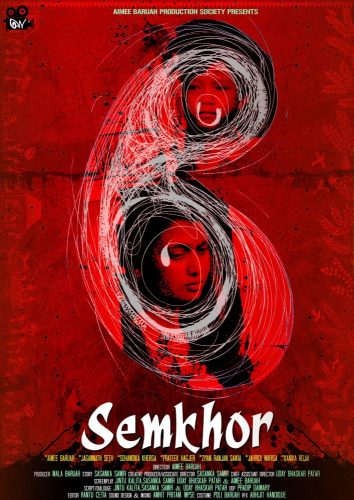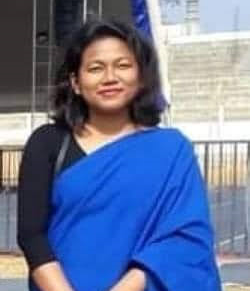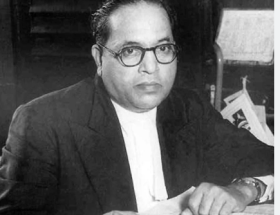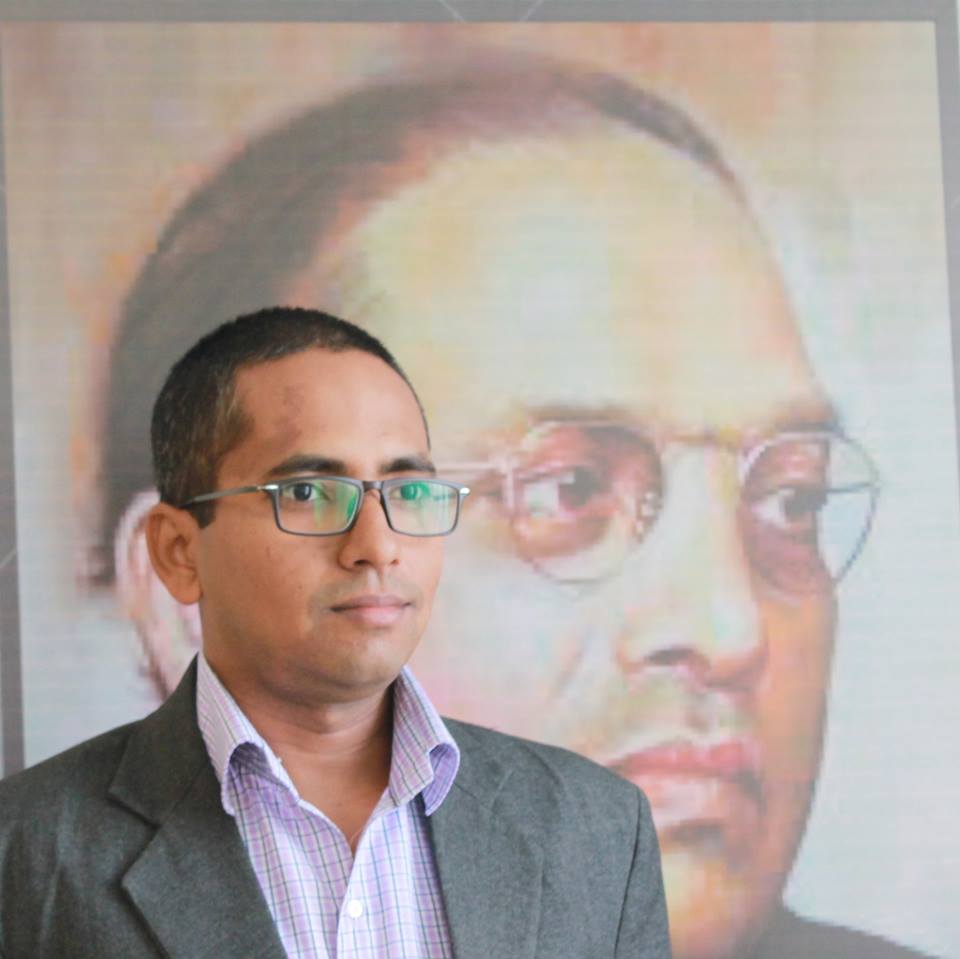Rakhee Naiding
Abstract
The film Semkhor from Assam, which recently won the Best Dimasa Language Film Award at the 68th National Awards in July 2022, has received backlash from the Dimasa community on which it is based. The film has kicked up a storm in the state, with demands rising for banning the film from different quarters of the civil society of Assam. This commentary is a review of the film and the debates that have ensued following accusations of misrepresentation of an indigenous community. The filmmakers, especially the actor, producer, and director of Semkhor, Aimee Baruah, has denied any wrongdoing citing that it is a fictional story with no intent of harm. However, the film is fraught with insensitive and downright racist representations. Baruah’s handling of the entire project has been callous, and her outlook on the people whom she represented on the global stage has been exposed to be prejudiced to the core.
Keywords: Semkhor, Aimee Baruah, Dimasa, National Film Awards
This commentary contains spoilers!!!

Figure 1 Poster of Semkhor Movie
jini dongthai jithai rigilakha thikhabo, dara la gathar ha ning dongba se‘’~ Razut vlogs, a resident of Semkhor1
The film Semkhor by Aimee Baruah, in her directorial debut, is a Dimasa language film that has recently been in the news for bagging multiple national and international awards. Semkhor depicts a mother’s ordeal and rebellion against the inhuman norms of a patriarchal society in the remote village of Semkhor in the Dima Hasao district of Assam. The film premiered at several international film festivals and bagged the Best Dimasa Language Film Award, 2020 at the 68th National Film Awards held in July2022. However, the film has kicked up a controversy soon after the screening began in Guwahati. Started by the Dimasa Mothers’ Association, the Dimasa community on whom the film is based,and its civil society organisations are protesting against the film and demanding its ban. They have now written to the President of India on the grounds that it has misrepresented and demonized an indigenous community. According to Baruah as stated in her interviews, the storyline of the film is fictional, and her primary intent behind choosing Semkhor and the Semsas (Dimasa people of Semkhor village are called Semsa) to situate her imaginary tale was ‘to showcase their beautiful landscape, their attire, their language (sic).’2
The filmmakers seem to be woefully as well as willfully ignorant of the concept of cultural appropriation. The film portrays Semkhor and its residents as cut off from the world outside, a favoured trope of the hegemonic colonialist lens, and projects racist stereotypes on the Semsa. Semkhor joins a long list of movies produced in India which have appropriated indigenous identities and built stereotypes of indigenous cultures such as Ye Gulistan Hamara, Tango Charlie, Mary Kom, RRR to name a few. The filmmakers, especially Baruah, who is an actor, director and producer have gained worldwide popularity, and the film has been monetized to the maximum expropriating indigenous culture, space, and labour. Baruah’s response to the Dimasa people’s demand has been more tone-deaf retorts about the film being fictional. She contended that there was a miscommunication on the part of the Dimasa public, who are yet to watch the movie and hence the protests. The irony here is that the Dimasa community, especially the residents of Semkhor were not, never mind professional ethics, even for courtesy’s sake, shown the movie. There was no prior screening held for the Dimasa people, and no attempts were ever made to seek any sort of consent, which could have allayed issues of miscommunication, if any. Prima facie, it looks like the filmmakers happened to chance upon an indigenous community, created a convoluted story based on the community, shaped it according to their own racist stereotypes of indigenous lifeworld and profited off the same without considering the harm and hurt that could be done and which has already been caused to the community.
Hegemonic Fantasy Screenplay
The story of Semkhoris written by Sasanka Samir and the screenplay credits do not mention any Dimasa writers. Semkhor’s heroine (only called Muri ma i.e. Muri’s mother as is the Dimasa tradition) played by Aimee Baruah is portrayed as a Dimasa woman with a rebellious streak in a gendered society. She is married to Muri pha (Jagannath Seth), and they have three children, a daughter Muri and two boys. The Semkhor landscape is colourful, and the screen fills up with the colourful attire of the Dimasa men and women amidst the blue hills and vales, sounds of Dimasa musical instruments played during festivals, and visuals of vivid rituals. The social environ though is grim especially for the women while the menfolk seem to be very carefree with a little too much alcohol (judima3) consumption. This bothers the womenfolk, especially Muri ma, who is also seen breaking out in a monologue, ranting against this social evil. The story takes a dark turn when Muri pha dies and the young family is left on their own. The boys are also soon killed off; one is eaten by a tiger, and the other boy, gravely injured, is taken to a hojai (a Dimasa religious functionary) who is unable to cure the boy of his fatal injuries but disallows Muri ma from taking the boy to a doctor outside the village. Here the hojai is seen cursing the family and the entire village because of Muri ma’s act of questioning the hojai’s capacity and attempt to break traditional norms. Muri, who was betrothed at birth, has now come of age and hence is married off. She is soon in labour and dies during childbirth due to the community’s unwillingness to allow the young mother modern medical facilities. As is the tradition, since Muri dies soon after giving birth, her baby is now to be buried alive alongside the mother’s pyre. Muri ma, who was earlier seen trying to defy oppressive tradition during several instances, is now desperate. She is determined to save the only living member of her family and in an act of decrying the community and questioning the Semsas’ humanity depicted in another monologue, is seen running away from the village with the infant. Her escape with the infant marks her freedom and is supposed to give the audience hope that the protagonist is now rid of the shackles of Semkhor’s regressive patriarchal prison.
Firstly, one must admit the movie would please movie-goers visually and aurally (non-Dimasa speakers won’t mind the accents of Baruah and Seth). However, the lack of meaningful representation in the creative production of the film led to a huge gap in the real-life condition prevalent in Semkhor and what is portrayed in the movie as the culture and practices of its people. With creative control in the hands of a non-Dimasa team led by Baruah, the screenplay has fallen prey to a hegemonic caste and class understanding of the hill dwellers’ culture and practices. For instance, Semsas are portrayed as so superstitious that they have voluntarily cut themselves off from the world for their fear of changes coming in from external forces. They have taboos that they strictly follow and impose, especially on the women of Semkhor thus making the society pure and pristine as in, untouched from outside influence and all the same fraught with taboos and practices that make it brutish, backward, and wretched. This understanding of a tribal community is a hegemonic fantasy of a colonial and racist lens which has been called out umpteenth times and yet Semkhor’s makers have no sensitivity to.
According to Aimee Baruah who is also credited for the screenplay besides others, the story is Sasanka Samir’s and has nothing to do with Semsa people. She says, ‘I’m putting someone’s story in a hilly area (sic)’.4 However, this statement came only after criticism of the story grew and prior to that Baruah as is evident in her interview from the Goa Film Festival in 2021, was claiming the film is based on actual practices of the Semsa.
In addition to the self-isolation of the Semsa, they are also shown to be practicing female infanticide and betrothal at birth. This article in no way wants to say that Dimasa society is without its own patriarchal tendencies and orthodoxies, but what is the intent behind inserting these practices which do not exist in the Dimasa society? The insertion of these Manuvadi cultural practices, historically most prevalent as recorded in upper caste cultures of North-Western India in an indigenous society, is mischievous and serves the purpose of averting blame for such regressive practices from one’s own hegemonic culture and putting it on a marginal community. This also makes caste Hindus believe that female infanticide and child marriage happen in far off interior backward societies while they have rid themselves of such in their urban and elite centres.
Furthermore, the hojai and baruwa are shown to not allow Semsas to use any modern treatment and areeven shown to curse the family and the entire village when Muri ma wants to take his ailing son to the doctor. The scene is akin to the much-observed theatrical ‘shraap’ scenes in Hindi cinema, where sages curse people who have crossed them. Hojai and baruwa are not godmen who dole out ‘shraap’, neither are they imposers of tradition in the Dimasa society. They are just functionaries who can be best equated to a shaman and are mediums of divination and healing in the Dimasa spiritual world. However, the portrayal of these religious functionaries as both thugs and dogmatic imposers of tradition and taboo is just another racist outlook of an indigenous cultural practice. The power exercised by these functionaries in Dimasa society can be gauged from the fact that there are lesser and lesser hojai and baruwa among the Dimasas today and Dimasa religious system (daikho) is under severe threat from surrounding organized religions. In this context, the utterly callous portrayal of hojai and baruwa is a more than grievous attack on Dimasa culture and practices.
The film also tends to portray Semkhor as some badland where the modern state ceases to exist. Baruah claims as much in the interview5 at International Film Festival held in Goa in late 2021 where she stated that Semkhor residents wilfully uproot electric poles and dig up roads made by local authorities which prevents any state intervention. One will not be surprised to know that Semkhor village is an electoral constituency under the Sixth Schedule of the Indian Constitution, thereby following customary practices in conjunction with the constitutionally laid down autonomous council rules. There is an emergent civil society in Semkhor who have been at the forefront of several political demands even within the district.
Despite the film’s disclaimers of the story being fictional one is bound to ask just how much of fiction is to be entertained in the name of cinematic freedom, especially when the fictional story is based on real people and space. What if the fiction furthers racist stereotypes? Semkhor’s fantasy screenplay does just that and has further imprinted hegemonic stereotypes on yet another marginal, indigenous community like the Dimasa and the unsuspecting residents of Semkhor.
Exploitation and Expropriation of an Indigenous Lifeworld
Second issue I raise of the film besidesis the exploitation and in fact, expropriation of Dimasa cultural resources, space, and labour. The filmmakers took the film first to the urban habitat centres and international film festivals instead of screening the movie locally. In another interview6, Baruah justified this by saying her intent was to take the Dimasa community’s culture to the international platform. What filmmakers have done here is extracted the Dimasa cultural identity and information from the community, merged them with the racist projections of the script writers, and hybridized into a format which would still be a feel-good movie of female heroism, palatable to a global audience for maximum monetization as well as accolades.
Baruah in the interview at the Goa Film Festival admits that she invaded the private space of the Semkhor people but goes to rationalize this intrusion reiterating that her intent is only to show to the world how Semkhor despite its backwardness which Baruah measures several times in her own words, the lack of internet and people never seeing a drone prior to her arrival, are still happy! Baruah claims that she and her team camped at the foothill of Semkhor village for three months and her 65- member crew wasn’t allowed to stay the night that being a taboo. How does a village with meagre resources of its own accommodate 65 members over a period of three months! It is apparent that the filmmaker thinks she is entitled to the communal space of the Semsa even after she clearly admits that she intruded in that space. Yet, contrary to even this author’s belief, it was later proven in another video7 by News Dima Hasao journalist Mr. Zed Nunisa who made a visit to Semkhor to inquire about the account of the film crew’s stay at the village. The video clearly shows the statements of the elders of Semkhor that they had gone out of their way, even undergoing severe inconveniences, especially their own womenfolk, to make the crew feel welcome and fully cooperated with them on assurance that they would represent Semkhor’s people and culture in a beautiful and dignified way. Despite these, even a thank you note to the people of Semkhor in the film credits was found missing.
As stated earlier, the two protagonists and a ninety-nine percent crew of the film who have been credited are non-Dimasas. A few Dimasa actors made the cut, but they were hardly given any credit except for a few photo-ops on social media. The Dimasa actors, in a live statement on Facebook which has now been made private claimed that they had no creative control in terms of dialogue and story and only acted out their lines as directed by the producer and director. Indeed, the film has been presented as made by the one-man or woman army in this case, that is Aimee Baruah. Ms. Baruah also cast herself as Muri ma which is an example of ‘whitewashing,’ an issue which people do not wish to discuss in Indian cinema. A big star being cast is understood almost as a favour which would garner publicity for the film and sell more tickets. No doubt a film must rake in the profits, but can any conscientious filmmaker ignore the social impact of a media like film which have the most potent reach among the masses and can make a profound psycho-social impact as well. Coming back to ‘whitewashing’ big names do not necessarily draw audience and should not be used as an excuse to expropriate resources of the community while denying members from the same community meaningful representation. Ms. Baruah was in fact, questioned in the same interview during the Goa festival if she didn’t ponder casting a native actor as the protagonist Muri ma to which she had the most offensive as well as ridiculous answer. She stated that the locals denied on grounds of inexperience, and other actors from the nearby town Maibang refused as well saying that they had never seen a camera before! Mind you these are ‘small time’ but popular Dimasa actors who have starred in several Dimasa videos as well as feature films with several million views on YouTube. Thereafter, Ms. Baruah to assuage the questionable casting and probably becoming aware of her own ridiculous statement, feels the need to transcend its limitation, claims to have involved herself in another contentious craft called ‘method-acting’ and for that she claims she wore the local Dimasa attire of the womenfolk, did not wear any footwear, did not go to the salon, did not comb her hair, during the time she camped at the foot of the hill where Semkhor village is located for about three months!
News has also now emerged that Semkhor’s production team was so callous as to have allegedly caused the death of the same infant who Muri ma saves from the people of Semkhor in the film. The infant is said to have fallen ill after the shoot and passed away within a week. This allegation was investigated by Mr. Daniel Langthasa, an elected member of the Dima Hasao Autonomous District Council, Haflong constituency, and according to a news report8, questions have been raised on the possible flouting of Child, and Adolescent Labour (Prohibition and Regulation) Act, 1986 which directs that casting infants in films require prior permission of the magistrate. The family claims they have not received any remuneration nor even a call from the filmmakers.
It should not be the ‘burden’ of the members of hegemonic caste and class to represent marginal cultures at any international or national fora. Such notions that individuals from hegemonic cultures harbour are narcissistic to the core and ought to be discarded. Minimum effort was made to understand the life world of Semkhor, the nuances of its everyday actions, decisions, practices, gender relationsbut its beautiful landscapes exploited to force the aesthetic in Semkhor and make for visual appeal! The gross exploitation of labour of the people of Semkhor, the brazenness in invading the communal space and yet giving no credit or remuneration, with the promise of international display to its unassuming populace is criminal expropriation!
Conclusion
After watching the film and studying the debates that have ensued, and as a Dimasa woman, this author would like to send out one message to people associated with the making of Semkhor and prospective filmmakers who wish to represent marginal cultures like the Dimasas on the big screen. First advise would be to not do it! Efforts can be rather made to empower the people of the respective culture to make their own films and tell their stories as they wish to. Support the independent and small-time filmmakers in these communities who are trying to gain their own foothold among the giants. We need solidarities not saviour figures who think it their mission to present to the world the unrepresented as if mere show pieces. This objectification is unethical and unwelcome, and the result can only be the type of film like Semkhor. Baruah can definitely be Aimoni and Rangdhali but she can’t embody Muri ma after trampling on the culture and personhood of the Muri mas among Dimasa women. In conclusion, this author would like to add that it would do well for conscientious people across communities to watch this moving message9 by filmmaker Vetrimaaran of Asuran fame, a film which was a commercial success as well as socially sensitive one. As Vetrimaaran puts it so succinctly and I paraphrase him here, art is not only about aesthetic beauty, but also about people and hence it is inherently political. Art should be handled responsibly. If not, our identities will be taken from us.
~
Endnotes
- The sentence is taken from a young vlogger from Semkhor, Mr. Razut Langthasa who is a student of Class XII. It is Dimasa and roughly translates to ‘the ways of Semkhor may not be the ways of others, we may look unclean to you, but it is without doubt that we follow the sacred practices of our people’. The author would like to thank Razut for allowing the use of this quote from his vlog. His clarity of thought as seen in his vlog requesting all Dimasas to come together to question the defamation of Semsas and by continuation all Dimasas greatly inspired this author to write this piece.
- https://www.youtube.com/watch?v=etcn-9kpXtM&t=6s Aimee Baruah’s interview to India Today on why one should watch the film Semkhor.
- Judima is the traditional liquor brewed by Dimasa women. It is a rice wine and its usage is sacred and meant for offerings in festivals and religious sacrifices.
- https://www.youtube.com/watch?v=etcn-9kpXtM&t=6s Aimee Baruah’s interview to India Today on why one should watch the film Semkhor.
- https://www.youtube.com/watch?v=5dOpuNHWCiMIbid This interview of Ms. Aimee Baruah is from the Press Conference while screening and promoting the film at the 52nd International Film Festival of India held in Goa in November 2021.
- https://www.youtube.com/watch?v=etcn-9kpXtM&t=6s Aimee Baruah’s interview to India Today on why one should watch the film Semkhor.
- https://www.youtube.com/watch?v=be5QOSev-Cs News Dima Hasao is a local news channel of Dima Hasao district. Mr. Zed Nunisa, a journalist of the channel undertook a journey into Semkhor and spoke with the residents of Semkhor and obtained testimonials regarding Semkhor shooting and Aimee Baruah’s statements regarding their unwelcome attitude towards the outsiders.
- https://www.newsclick.in/semkhor-movie-centre-controversy-discord-assam
- https://www.youtube.com/watch?v=lM3lbuPbWyY Acclaimed director Vetrimaaran’s speech on the need for politics in cinema on the 60th birthday celebration of MP and VCK leader Thol. Thirumavalavan.
~~~
Rakhee is a PhD scholar at the University of Hyderabad.










